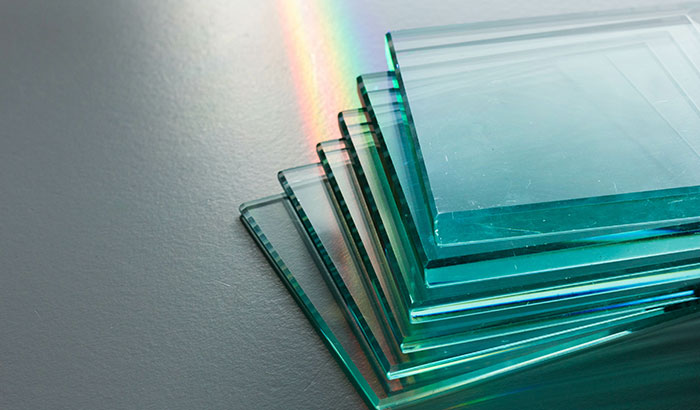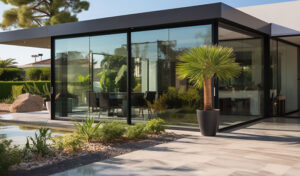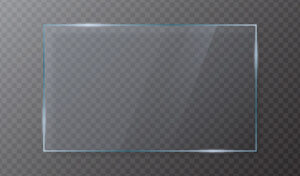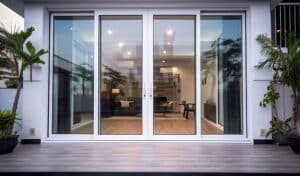What is the standard for mirror thickness? Can mirrors be recycled?
Mirrors are an essential element of home decor, and they serve many practical purposes beyond their aesthetic value. Mirrors can make a room appear larger and brighter, and they can also serve as decorative items.
When choosing a mirror, one of the most critical factors to consider is its thickness. The thickness of a mirror can impact its durability, reflective quality, and overall appearance. In this blog post, we’ll explore what a good thickness of a mirror is and why it matters.
The thickness of a mirror is typically measured in millimeters. The thicker the mirror, the more durable it is likely to be. Thicker mirrors are less likely to break or shatter, making them a safer choice for households with young children or pets. However, thicker mirrors are also heavier, which can make them more challenging to mount or move.
What Is the Standard for Mirror Thickness?
The thickness of a mirror can impact its durability, reflective quality, and overall appearance. In this blog post, we’ll explore the standard glass mirror thickness and why it matters.
- In general, mirrors that are up to 24 inches wide typically have a thickness of 1/8 inch or 3mm. These mirrors are usually used in small areas like bathrooms, dressing rooms, and entryways. They are lightweight and easy to install, making them a popular choice.
- For mirrors between 24 and 48 inches wide, a thickness of 3/16 inch or 4.8mm is usually the standard. These mirrors are often used in bedrooms, living rooms, and dining rooms. The increased thickness provides more durability, making them safer for high-traffic areas.
- For larger mirrors over 48 inches wide, the standard thickness is 1/4 inch or 6mm. These mirrors are used in gyms, dance studios, and other large areas where people will be moving around frequently. The increased thickness provides more stability and durability, making them a safer choice.
It’s important to note that the standard thickness for mirrors can vary depending on the manufacturer and the intended use. For example, some manufacturers may offer mirrors that are thicker than the standard for added durability, while others may offer thinner mirrors for aesthetic reasons.
Types of Mirror Glass
When choosing a mirror, it’s essential to consider the type of glass used in its construction. High-quality mirrors are typically made from tempered glass, which is much stronger and more durable than regular glass. Tempered glass is created through a process of heating and cooling regular glass, which makes it up to four times stronger than regular glass.
Tempered glass is less likely to break or shatter, making it a safer choice for households with young children or pets. If a tempered glass mirror does break, it will shatter into small, rounded pieces rather than sharp, jagged shards, reducing the risk of injury. This makes tempered glass mirrors a popular choice for bathrooms, gyms, and other areas where accidents are more likely to occur.
In addition to its safety benefits, tempered glass also offers improved optical quality. Tempered glass mirrors have a more even surface and are less likely to distort reflections than regular glass mirrors. This means that images reflected in tempered glass mirrors are more accurate and true to life.
When shopping for mirrors, it’s important to note that not all mirrors are made from tempered glass. Some lower-quality mirrors are made from regular glass or a type of acrylic, which can be prone to scratching and warping over time. These types of mirrors may also be more prone to shattering, making them a less safe choice for households with young children or pets.
High-quality mirrors are typically made from tempered glass, which offers improved durability, safety, and optical quality. If you’re unsure whether a mirror is made from tempered glass, be sure to check with the manufacturer or retailer before making your purchase. By selecting a high-quality mirror with tempered glass, you can ensure that you’re choosing a product that will last for years to come while also providing a safe and accurate reflection.
Does Thinkness Impact Reflective Quality?
In addition to its impact on durability and safety, the thickness of a mirror also plays a critical role in its reflective quality. Thicker mirrors generally offer a better reflection than thinner mirrors, as they are less likely to distort the image. This is because thicker mirrors have a more even surface, which allows for a clearer and more accurate reflection.
A thicker mirror also tends to be more stable, which can prevent warping or bowing over time. This is particularly important for large mirrors, which can be more susceptible to bending or distorting if they are too thin. A mirror that warps or bows over time can cause distortions in the reflected image, making it less accurate and less useful for its intended purpose.
However, the reflective quality of a mirror is not solely dependent on its thickness. Other factors, such as the quality of the glass and the mirror’s manufacturing process, can also impact its reflective quality. For example, some mirrors are coated with a layer of metal or other reflective material to enhance their reflective properties. Additionally, the way a mirror is installed and positioned can also impact its reflective quality.
When selecting a mirror, it’s important to consider its intended use and the desired reflective quality. Thicker mirrors are generally better for areas where a clear and accurate reflection is essential, such as bathrooms or dressing rooms. However, thinner mirrors may be sufficient for decorative purposes or in areas where a perfect reflection is not as critical.
Can Mirrors Be Recycled?
While mirrors add beauty and function to our homes, they can also contribute to waste when they are no longer needed. The good news is that mirrors can be recycled, but the process can be a bit more complicated than other materials.
Most mirrors are made of a combination of glass and metal, which can make them difficult to recycle. The glass used in mirrors is often coated with a thin layer of metal, such as aluminum or silver, to create the reflective surface. This metal layer can cause problems when the mirror is recycled, as it must be removed before the glass can be processed.
One challenge with recycling mirrors is that the metal layer is often difficult to separate from the glass. This means that mirrors are typically not accepted in curbside recycling programs, and must be taken to a specialized recycling facility that can handle the material.
Another option for recycling mirrors is to repurpose them instead of sending them to the recycling center. Old mirrors can be used in a variety of ways, such as in mosaic artwork or as decorative accents in garden landscaping. In some cases, a broken mirror can even be used to create a new, unique piece of furniture or décor.
Murray Glass
Murray Glass, a family-owned business, offers a wide range of glass and mirror-related products for homes and businesses in Northern Utah. From home renovations to enhancing store security, our skilled technicians are equipped to handle all your glass needs.
Our impressive selection of patio doors and vinyl windows is installed by experienced professionals, providing you with peace of mind. As a local business, we are committed to supporting our community from Ogden to Spanish Fork. Our belief is that the finest glass products combine both aesthetics and practicality.
Contact Murray Glass today to talk to a specialist about all your glass design and installation needs.





